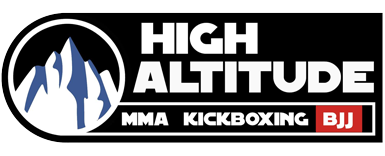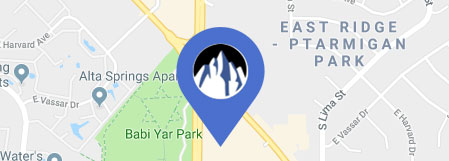Any individual who has sustained a significant impact to the head should be seen by a physician or neurological specialist. This guide is not a replacement for professional medical guidance, and far from exhaustive in regards to treating and preventing traumatic brain injury.
First:
Any loss of consciousness from impact is by definition a concussion. It is recommended you see a doctor as soon as possible after any such incident.
Second:
You do not need to be concussed to have same damage as single concussion/knock out. A concept known as sub-concussive burden refers to the accumulated trauma from small non-concussion causing (sub-concussive) impacts. Such accumulation can essentially “add up” to the same level of trauma as a single concussive incident. This is not meant to alarm, rather emphasize the importance of both dietary and behavioral interventions that can lessen or prevent the long term trauma of such incidents.
The following diet, supplementation, and behavioral interventions have shown to be effective in the prevention of the short term trauma and long term neurodegenerative effects of sub concussive impacts as well as traumatic brain injury (TBI).
Diet and Supplementation:
Follow guidelines for daily intake of supplements based on packaging guidelines or ask your doctor/neuro specialist for guidance on daily intake.
- Keto diet
○ The brain is made of fat. A high fat, zero-carb diet has shown to help repair damage potentially sustained during an impact to the head through increasing the energy and building blocks needed in recovery. Current recommendations suggest 1 month post injury of a strict keto diet
- Low/Zero sugar
○ Post impact, the brain can enter a state of hyperglycemia (high glucose production/utilization) which can lead to sustained inflammation, lactate production (poor energy source), and permeation in the blood brain barrier (other inflammatory products from your body could enter the brain).
○ The reduction of sugar intake can reduce inflammation and aid in recovery
- Post Impact Supplementation
○ Curcumin: Anti-inflammatory, reduces oxidative stress
○ Omega 3: Repair, Anti-inflammatory
○ Zinc: Neuroprotective, reduces physiological induced anxiety, depression related to impact
○ Selenium: protects against neurodegeneration post impact
○ B-Complex: reduces oxidative stress, aids in energy support, can mitigate excitotoxicity (nerve cell death post injury)
- Preventative Neuroprotective Supplementation
○ Magnesium Bisglycinate / Magnesium: Repair, Anti-inflammatory, Neuroprotective
○ Zinc 25mg/day : Neuroprotective, reduces physiological induced anxiety, depression related to impact
○ Curcumin: Neuroprotective, Anti-inflammatory
Behavioral Interventions:
Neuromechanical coupling and it’s relation to concussion risk
- Neuromechanical coupling is simply how efficient the connection is between your brain and your body. Concussive impacts or sub concussive impacts can disrupt the time it takes for your brain to recognize a stimulus and to respond appropriately. Even without a concussion small impacts over time can disrupt this process and delay reaction times. When we feel an impact to our head, our neck muscles stiffen to lessen the movement that leads to brain injury. This delay can build up over time and make the reaction slower and slower which leads to what fighters call a “glass jaw”. You become more easily concussed if this delay is not addressed. Below are ways to strengthen this connection and recover from this delay
- Dual task processing (PRE AND POST)
– Apps
○ Dual and back
§ Free app that uses of auditory cues in conjunction with visual instructions
– Activities
○ Single leg balance with ball catch
§ Balance on each leg for at least 30 secs x 10 reps while catching a ball from various angles either bounced off a wall or thrown by a partner
○ Visual motor reaction tests
§ Use of fit lights or reaction time training boards where lights in peripheral vision challenge reactions speeds
Graduated Return to Sport
- Each activity can be done to tolerance, meaning until symptoms such as headache, dizziness, fatigue (abnormal), or nausea occur. Once symptoms are no longer present you may add in the next activity
1. Cardio
2. Weights
3. Sport specific
4. Drilling
5. Sparring
Other Interventions
– Neuro vestibular therapy
• Rehabilitation that assists with re-aligning our bodies neurological systems to work together again more efficiently
– Neurofeedback therapy
• It is a form of “operant conditioning” of the brain’s electrical activity in which desirable brain activity is rewarded and undesirable activity is inhibited.
• Post injury the frequencies of our brain that determine sleep, rest, digest, focus, relaxation, stress etc. can become overactive, underactive or “stuck” in a way that can cause psychological and physiological dysfunction. Neurofeedback helps to find balance and flexibility again through treatment.
Resources:
Defining Head Injury
Keto diet
• (https://www.ncbi.nlm.nih.gov/books/NBK209323/)
Low/Zero sugar
• (https://pubmed.ncbi.nlm.nih.gov/16364299/)
Post Impact Supplementation
• (https://pubmed.ncbi.nlm.nih.gov/16364299/)
• (https://www.ncbi.nlm.nih.gov/pmc/articles/PMC3801180/)
• (https://www.sciencedirect.com/science/article/pii/S0925443907001895)
• (https://www.ncbi.nlm.nih.gov/pmc/articles/PMC4870112/)
Preventative Neuroprotective Supplementation
• (https://www.ncbi.nlm.nih.gov/books/NBK209305/)
• (https://www.ncbi.nlm.nih.gov/pmc/articles/PMC5084116/)
• (https://www.ncbi.nlm.nih.gov/pmc/articles/PMC3801180/)
• (https://www.ncbi.nlm.nih.gov/pmc/articles/PMC2911034/)
Neuromechanical coupling
• (https://hes.appstate.edu/sites/default/files/sjmssneuromechanicaldecoupling.pdf)
Dual task processing
Graduated Return to sport
• https://www.cdc.gov/headsup/providers/return_to_activities.html
Neuro vestibular therapy: http://www.neurobalancept.com/
Neurofeedback therapy: http://Braincodecenters.com
By: JOSEPH R FRITZ
MA SPORT & PERFORMANCE PSYCHOLOGY




